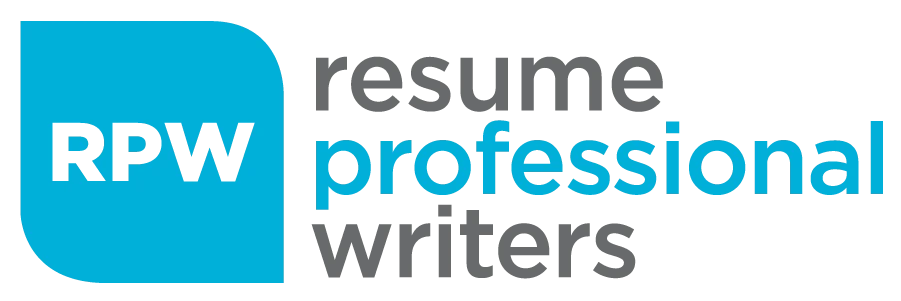An applicant tracking system (ATS) is software that manages the hiring process by automating tasks like job postings and resume sorting. This article will explain an ATS, its key features, and how it can make recruitment efforts more efficient and effective.
Key Takeaways
- Applicant Tracking Systems (ATS) streamline the hiring process by automating tasks such as resume filtering, interview scheduling, and candidate communication, enhancing recruitment efficiency.
- Key features of ATS include resume parsing, candidate management, and automated job posting, all of which improve organization and expedite the hiring process.
- The future of ATS includes advancements in AI, mobile accessibility, and emotionally intelligent systems, which aim to create more personalized and efficient interactions with candidates.
What Is an Applicant Tracking System?

An Applicant Tracking System (ATS) is a software solution designed to streamline hiring by tracking candidates throughout their recruitment journey. The primary role of an ATS is to manage candidate information and automate various recruitment tasks, which significantly enhances the overall efficiency of hiring teams. It acts as a digital assistant, keeping track of every applicant to ensure no potential hire slips through the cracks.
The evolution of ATS has seen a significant shift towards cloud-based systems. These modern solutions offer greater flexibility and accessibility, allowing hiring managers to access candidate information anywhere. This evolution has transformed ATS from simple resume-sorting tools into multi-functional platforms supporting various recruitment activities.
Beyond the basic functionalities, ATS also plays a crucial role in enhancing employer branding. Providing a seamless and professional candidate experience attracts top talent and positions the company as a desirable workplace. In today’s competitive job market, the ability to present a strong employer brand can make all the difference in securing the best candidates.
Most applicant tracking systems are designed to manage the entire hiring pipeline, from job postings to onboarding. They integrate with various job boards, social media platforms, and other recruiting tools, making it easier for hiring teams to manage their workflows efficiently. As a result, ATSs have become indispensable tools for organizations of all sizes, helping them easily navigate the complexities of the hiring process.
How Does an Applicant Tracking System Work?
The magic of an applicant tracking system begins when hiring teams input job details into the system. This step sets the foundation for the entire hiring process, enabling the ATS to facilitate filtering incoming resumes based on the specified criteria. A digital gatekeeper ensures that only the most relevant applications reach the next stage.
Once job seekers submit their resumes online, the ATS collects and organizes them according to the job posting’s criteria. This organization is crucial for maintaining order amidst the flood of applications. The system tracks candidates’ progress throughout the hiring process, providing a clear overview of where each applicant stands. This level of organization is a game-changer for hiring managers who must keep tabs on multiple candidates simultaneously.
One of the standout features of an ATS is its ability to automate interview scheduling and candidate communication. Gone are the days of back-and-forth emails trying to find a suitable time for an interview. The ATS integrates with calendars, streamlining the scheduling process and ensuring timely communication with candidates. This automation not only saves time but also enhances the candidate experience.
In addition to these functionalities, an ATS ranks candidates by evaluating resumes for relevant keywords and qualifications. This ranking system helps hiring teams focus on the most promising candidates, ensuring a more efficient and effective recruitment process. By identifying and prioritizing each qualified candidate, the ATS enhances the efficiency of resume parsing and improves the overall quality of hire. Automating these time-consuming tasks allows recruiters to dedicate more time to engaging with top candidates and making informed hiring decisions.
🔍 Think Your Resume’s Fine? Let’s Double-Check That
Even strong resumes can miss critical details—especially when it comes to passing Applicant Tracking Systems (ATS). Our specialists offer a free review to uncover gaps, improve formatting, and ensure your resume is ATS-ready and recruiter-friendly.
Key Features of Applicant Tracking Systems
Applicant tracking systems have many features designed to optimize the hiring process. From resume parsing and candidate management to automated job postings, these systems offer tools that enhance every stage of recruitment, including applicant tracking software.
Let’s examine these key features and explore how they contribute to a more efficient and effective hiring process.
Resume Parsing
Resume parsing is one of the fundamental features of an ATS. This functionality allows the system to filter resumes based on specified criteria such as skills, education, and experience. Sifting through hundreds of resumes manually is tedious, but resume parsing quickly scans applications and highlights suitable candidates from the pool of applicants.
The parsing process relies heavily on keywords set by the employer. The ATS scans resumes for these keywords, matching candidates’ qualifications with the job requirements. Candidates not meeting certain keyword thresholds may be automatically set aside, ensuring that only the most relevant applications are considered. This keyword-based approach can achieve accuracy levels of around 70%, making it a reliable tool for initial candidate screening.
Professional resume writers often help job seekers create ATS-friendly resumes optimized with the right keywords. By understanding the intricacies of resume parsing, these experts can craft documents that stand out in the eyes of both the ATS and hiring managers. This alignment between technology and human expertise ensures that the most qualified candidates can make it through the initial screening process.
Candidate Management
Effective candidate management is another cornerstone of applicant tracking systems. ATS enhances candidate communication by improving inter-departmental messaging, scheduling bulk emails, and promptly updating candidates about their application status. This level of communication ensures that candidates are kept in the loop, enhancing their overall experience.
Another significant benefit of ATS is the automation of interview scheduling. Integration with calendars allows the system to coordinate and schedule interviews to facilitate real-time feedback. This automation saves time for recruiters and enhances the candidate experience by making the process more intuitive and organized.
Candidate management tools within an ATS allow for organized candidate profiles, collaboration among the recruiting team and members, and reporting features. These tools make it easier for hiring teams to keep track of applicants, share notes, and collaborate on hiring decisions. Streamlining these processes ensures no candidate is overlooked and that the best-qualified candidates move forward in the hiring pipeline.
Automated Job Posting
Automated job posting is a feature that significantly enhances the efficiency of the hiring process. An ATS can upload job listings and openings to multiple platforms with just one click. This automation ensures job ads reach a wider audience without manual posting, saving recruiters valuable time and effort. Additionally, this process can help in filling a job opening more quickly.
Automating job posting ensures efficiency by seamlessly allowing recruiters to post jobs on various platforms. This broadens the reach of job ads and ensures consistency in job ads, descriptions, and adherence to best practices. Pre-designed job application templates within the ATS help maintain this consistency.
Customization options are also vital to automated job posting. ATS allows customizing job boards and career pages to align with specific branding needs. This customization ensures that multiple job boards and postings reflect the company’s brand, attracting potential candidates who resonate with the organization’s values and culture, including the job board.
Interview Scheduling and Management
Interview scheduling and management are crucial aspects of the hiring process. An applicant tracking system (ATS) can streamline this process by automating interview scheduling, sending reminders, and providing a centralized platform for interview management. This feature enables hiring managers to focus on evaluating qualified candidates rather than spending time on administrative tasks. Interview scheduling can be quickly done with an ATS, and candidates can be notified promptly, improving the overall candidate experience.
An ATS integrates with calendars and email systems, allowing hiring managers to schedule interviews without the back-and-forth communication typically involved. This automation ensures that interviews are scheduled efficiently, reducing the time-to-hire and enhancing the candidate experience. Additionally, automated reminders help ensure that candidates and interviewers are well-prepared and on time, further streamlining the hiring process.
By centralizing interview management, an ATS provides a clear overview of all scheduled interviews, making it easier for hiring teams to coordinate and collaborate. This centralized approach ensures that no candidate is overlooked and that the interview process runs smoothly from start to finish.
Reporting and Analytics
Reporting and analytics are essential components of an applicant tracking system. These features give hiring managers valuable insights into the recruiting process, enabling them to make data-driven decisions. An ATS can generate reports on various metrics, such as time-to-hire, cost-per-hire, and source of hire, helping organizations optimize recruitment strategies. Additionally, analytics can help identify trends and patterns in the hiring process, allowing hiring managers to refine their approaches and improve the quality of hire.
With detailed reporting, hiring managers can track the effectiveness of different recruitment channels, such as job boards and social media platforms. This information helps allocate resources more effectively and focus on the most successful channels. Furthermore, analytics can reveal bottlenecks in the hiring process, enabling organizations to address these issues and streamline their workflows.
By leveraging the insights an ATS provides, organizations can continuously improve their recruitment processes, ensuring they attract and retain the best talent. This data-driven approach enhances the hiring process’s efficiency and improves hiring outcomes.
Benefits of Using an Applicant Tracking System
The benefits of using an Applicant Tracking System are manifold, ranging from streamlined recruitment processes to enhanced candidate experiences.
Explore these benefits and understand how ATS can transform your hiring process.
Streamlined Recruitment Processes
One of the most significant benefits of an ATS is centralizing recruitment data, making it easily accessible to the hiring team, and improving collaboration. Integrating advanced technology, ATS centralizes recruitment data, enhances recruiting processes, and ensures a more coordinated hiring effort. With all candidate information in one place, recruiters can quickly access and share data, improving overall efficiency.
ATS software automates various tasks, such as bulk job postings, application filtering, reference checks, and interview scheduling, significantly enhancing the efficiency of the talent acquisition process. This automation reduces the time and effort required to manage these tasks manually, allowing recruiters to focus on more strategic aspects of the hiring process.
Recruiters using ATS report a reduction in time-to-fill positions, which enhances overall productivity. Quickly identifying inefficiencies and optimizing recruitment workflows helps streamline the entire hiring process. This efficiency leads to better cost management and a more effective recruitment strategy.
The transparency and flexibility introduced by ATS further enhance the recruitment process. Eliminating manual entry and providing real-time updates increases recruiters’ productivity and facilitates smoother hiring workflows. This improves the recruitment experience for hiring teams and ensures that candidates are kept informed and engaged throughout the process.
Improved Quality of Hire
Integrating AI features into tracking systems has led to a significant reduction in time-to-hire, enabling quicker access to top talent. This integration allows ATS to automate various aspects of the hiring process, such as job postings, candidate identification, background checks, and communication, ensuring a more efficient recruitment process.
Automation within ATS allows recruiters to focus more on qualitative aspects during candidate evaluation, such as assessing soft skills and cultural fit. Additionally, ATS helps create compelling job descriptions that attract qualified candidates by providing useful templates to maintain consistency and adhere to best practices. Well-crafted job descriptions are crucial for eliminating bias and ensuring clarity in core responsibilities, which leads to better hiring decisions and improved quality of hire.
Contrary to common misconceptions, ATS evaluates all applications impartially based on set criteria, promoting fairness in the recruitment process. By capturing an accurate picture of candidates and recruitment policies, ATS improves the overall recruitment quality.
Enhanced Candidate Experience
Another significant benefit of using an ATS is the enhanced candidate experience. Features like automated messaging provide timely updates and improve communication with candidates. This level of communication ensures that candidates feel valued and informed throughout the hiring process.
ATS allows recruiters to organize communication and enable hyper-personalized follow-ups, ensuring candidates feel valued throughout the hiring process. This personalized approach enhances candidate engagement and increases the likelihood of securing top talent.
Looking to the future, AI-driven recruitment platforms are expected to focus on synergizing technology with personal interactions to improve candidate experiences. Creating a tech-human synergy will further enhance the recruitment process, ensuring a positive experience for all candidates.
Cost-Effective Recruiting
Cost-effective recruiting is a top priority for many organizations. An applicant tracking system can help reduce recruitment costs by automating tasks, minimizing manual efforts, and improving the efficiency of the hiring process. By streamlining the recruitment process, an ATS can help organizations save time and resources, which can be allocated to other critical business areas. Furthermore, an ATS can help reduce the cost-per-hire by enabling hiring managers to identify and attract top talent more effectively.
Automation within an ATS eliminates the need for manual data entry and repetitive tasks, freeing up recruiters to focus on more strategic activities. This increased efficiency leads to faster hiring times and reduced costs associated with prolonged vacancies. Additionally, by providing a centralized platform for managing the entire recruitment process, an ATS reduces the need for multiple tools and systems, further cutting costs.
An ATS also helps optimize job postings by ensuring they reach a wider audience through multiple job boards and social media channels. This broader reach increases the chances of quickly attracting qualified candidates, reducing the time and cost of sourcing talent.
Types of Applicant Tracking Systems
Applicant tracking systems can be divided into two primary categories: integrated systems and standalone solutions. Integrated ATS work within a broader HR software platform, allowing seamless data sharing across different functions. This integration ensures that all HR processes are aligned and that candidate information is easily accessible across departments.
On the other hand, standalone applicant tracking systems provide specialized functionalities that may not be available in integrated systems. These systems cater to specific hiring needs and offer more customization options, making them suitable for businesses with unique recruitment processes.
Both integrated and standalone ATS solutions can effectively cater to the needs of small businesses, not just large enterprises. Offering scalable solutions ensures that organizations of all sizes benefit from enhanced recruitment efficiency and improved hiring outcomes.
Common Misconceptions About Applicant Tracking Systems
Despite the numerous benefits of ATS, several misconceptions persist. Some believe that ATS eliminates human involvement in hiring, while others think that only large companies need ATS.
Let’s address these misconceptions and set the record straight.
ATS Eliminates Human Involvement
One common misconception is that ATS eliminates human involvement in the hiring process. While ATS automates many repetitive tasks, human judgment remains crucial for assessing candidate fit and culture alignment. Automating these tasks allows recruiters to focus on more strategic aspects of recruitment.
ATS promotes fairness in the recruitment process by evaluating all resumes based on the same criteria. This automation ensures that all candidates are treated equally, enhancing the overall effectiveness of the recruitment process.
Only Large Companies Need ATS
Another misconception is that ATS tools are exclusively for larger organizations. In reality, modern ATS solutions offer scalable options that benefit companies of any size. These systems can be tailored to fit specific recruitment processes of small businesses, enhancing their hiring efficiency.
Implementing an ATS is beneficial for organizations of all sizes. Small enterprises can significantly improve their recruitment processes, making them more competitive in the job market. This scalability ensures that even smaller companies enjoy the same advantages as larger organizations.
Future Trends in Applicant Tracking Systems
The future of applicant tracking systems is poised for exciting advancements. With the integration of AI and predictive analytics, enhanced mobile accessibility, and the development of emotionally intelligent ATS, the recruitment and talent acquisition landscape is set to become even more dynamic and efficient.
Let’s explore these trends in more detail.
AI and Predictive Analytics
AI-powered features increasingly integrate into applicant tracking systems, revolutionizing how candidates are assessed and predicting hiring outcomes. These AI-driven insights assist recruiters by offering predictions on candidate performance and cultural fit, streamlining the selection process and allowing for more informed and efficient hiring decisions.
The rise of predictive analytics in ATS enhances recruiters’ ease of use and improves the job search experience for prospective employees and candidates. Leveraging AI enables more profound insights into candidate data, ensuring only the most suitable candidates are shortlisted.
Mobile Accessibility
The growing trend of remote work is pushing ATS providers to prioritize mobile-friendly designs to meet the needs of recruiters and job applicants everywhere. Mobile accessibility ensures that hiring managers can manage recruitment processes from anywhere, at any time, making it easier to keep up with the demands of a competitive job market.
A mobile-friendly ATS allows candidates to apply for jobs and communicate with recruiters. This flexibility enhances the candidate experience, making it more convenient for job seekers to engage with potential employers.
Emotionally Intelligent ATS
Emotionally intelligent ATS represents the future of recruitment, focusing on creating personalized and meaningful interactions with candidates. These systems go beyond automation, engaging candidates in conversations that reflect empathy and understanding. This approach enhances candidate engagement and makes the hiring process more human-centric.
Creating a synergy between technology and human interaction enhances the recruitment experience. Emotionally intelligent ATS can significantly improve the quality of hire by ensuring that candidates feel valued and understood throughout the hiring process.
How Much Do Applicant Tracking Systems Cost?
The cost of applicant tracking systems can vary widely based on features and business size. Small businesses typically pay between $250 and $3,000 per year for ATS solutions, while medium-sized businesses may incur costs ranging from $3,000 to $15,000 annually. Larger companies with up to 5,000 employees might spend between $15,000 and $50,000+ each year.
Enterprises with over 5,000 employees often require budgets exceeding $125,000 annually for ATS solutions. These costs can increase due to additional support needs and features that may not be included in the base price. When budgeting for an ATS, it’s essential to consider the scope of the system, requirements, and additional services.
ATS pricing can be structured in various ways, including flat rate, pay per user, pay per vacancy, and pay per module. Understanding these pricing structures can help businesses choose the most cost-effective solution for recruitment needs.
Choosing the Right Applicant Tracking System
Choosing the right applicant tracking system begins with identifying the reasons for implementing an ATS and assessing current hiring processes. This assessment helps determine the features and functionalities necessary for your ATS, ensuring it aligns with your recruitment needs.
An effective ATS should support flexible customization of candidate search pipelines to cater to diverse recruitment needs. Customization options should align with the business’s unique hiring processes, ensuring that the system can adapt to changing recruitment strategies for qualified candidates.
Evaluating vendor stability and support is vital for a long-term ATS investment. It’s essential to consider the vendor’s plans and innovations and their ability to provide comprehensive onboarding and training. This ensures a smooth transition to the new ATS and maximizes its benefits.
Data security and compliance with regulations like GDPR are crucial factors in selecting an ATS. Ensuring that the system meets these requirements protects candidate data and maintains the integrity of the recruitment process.
Evaluating Features and Pricing
When evaluating applicant tracking systems, it’s essential to consider the features and pricing that align with your organization’s needs. Look for an ATS that offers a range of features, such as job posting, candidate management, and interview scheduling, at a competitive price point. Consider the system’s scalability, as well as the level of customer support and training provided. Additionally, evaluate the pricing model based on the number of users, job postings, or a flat fee to ensure it fits within your budget.
Scalability is crucial, especially for growing organizations. Ensure the ATS can accommodate your future needs without requiring a complete system overhaul. Customer support and training are also vital, as they ensure a smooth implementation and help your team make the most of the system’s features.
Different pricing models offer various advantages. A flat fee might be more predictable, while pay-per-user or pay-per-job-posting models can be more cost-effective for smaller organizations. Carefully assess your hiring volume and budget to choose the most suitable pricing structure.
Integrating with Existing Systems
Integrating an applicant tracking system with existing systems is crucial for a seamless recruitment process. Look for an ATS that can integrate with your organization’s HR systems, such as HRIS, payroll, and performance management software. Additionally, consider an ATS that can integrate with job boards, social media, and other recruitment channels to expand your reach. A well-integrated ATS can help streamline the recruitment process, reduce manual efforts, and improve the candidate experience.
Integration with HR systems ensures that candidate data flows smoothly from recruitment to onboarding. This seamless data transfer reduces the risk of errors and ensures that all relevant information is readily available to HR teams. Integration with job boards and social media platforms allows for automated job postings, ensuring your job openings reach a wider audience quickly and efficiently.
Choosing an ATS that integrates well with your existing systems can create a cohesive and efficient recruitment process that enhances the candidate experience and supports your organization’s hiring goals.
Implementing an Applicant Tracking System
Implementing an ATS requires the involvement of all stakeholders early on to ensure that the system meets everyone’s needs and increases acceptance. Having a detailed implementation checklist can help organize the process and address any challenges that may arise.
Thorough testing is essential to ensure the ATS functions correctly in various scenarios. Following the vendor’s instructions closely can prevent issues and facilitate smoother troubleshooting during implementation.
Integrating your ATS with other recruitment tools can enhance data synchronization, making hiring more efficient. Training the recruitment team on ATS features ensures they can effectively utilize the system and maximize its benefits.
Regularly reviewing performance metrics allows organizations to identify areas for improvement and refine their hiring strategies. Ongoing evaluation of recruiting metrics helps optimize the ATS and ensure it continues to meet the organization’s needs.
Optimizing Your ATS for Best Results
Optimizing your ATS involves customizing workflows to align the system with specific organizational needs and improve user experience. Essential initial steps include assessing needs, selecting an aligned system, configuring workflows, customizing fields, and training the team.
The ATS provides in-depth analytics and reporting tools that help organizations refine their recruitment marketing strategies. The ATS enables tracking performance and data-driven decisions by gathering and collating analytics from each platform.
The expected outcome of configuring and customizing an ATS is to create a streamlined, efficient hiring process that meets the organization’s unique needs right at the top. This optimization ensures that the ATS delivers maximum value and enhances overall recruitment efficiency.
Take Your Resume to the Next Level with Expert Insights
Applicant tracking systems (ATS) are indispensable tools that transform the hiring process through automation, enhanced communication with the right candidates, and efficient data management. By leveraging the key features and benefits of ATS, organizations can streamline their recruitment processes, improve the quality of hire, and enhance the candidate experience. As we look towards the future, advancements in AI, mobile accessibility, and emotionally intelligent ATS promise to elevate the recruitment landscape further.
Ready to ensure your resume is ATS-friendly and stands out to employers? Get a professional resume review today and maximize your chances of success!













